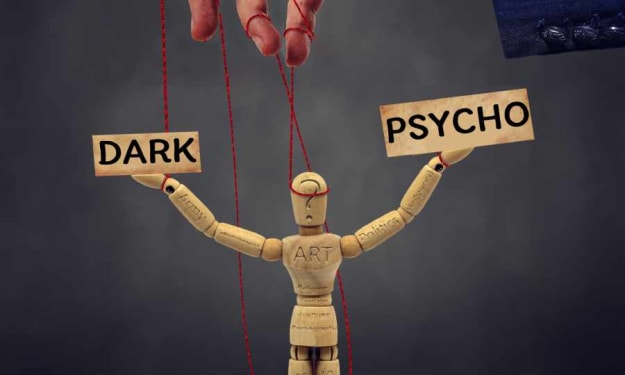Dark Psychology Tricks To Make Anyone Obsessed With You
Unlocking the Power of Empathy in Human Interactions

Empathy and manipulation are two sides of a coin, possessing the power to either bring people closer together or to use them for personal gain. While empathy is a tool for understanding and connecting with others, manipulation is a way of controlling and influencing their actions. Both can have a profound impact on the people they affect, making it important to understand their nature and use.
Empathy refers to the ability to understand and share the feelings of others. It is a crucial component of social interaction, allowing us to connect with others on a deeper level and to build relationships based on trust and understanding. Empathy helps us to understand the perspectives of others, and it can increase our emotional intelligence and ability to communicate effectively. This can be especially important in personal relationships, where empathy can help us to resolve conflicts and build stronger bonds.
Manipulation, on the other hand, is the act of influencing or controlling the thoughts, feelings, or actions of others. It can take many forms, including psychological manipulation, emotional manipulation, and even physical manipulation. Manipulators often use tactics such as lying, guilt-tripping, and playing on the emotions of others to get what they want. They may also use flattery, compliments, and other forms of positive reinforcement to control others.
While manipulation can be used to achieve a variety of goals, it is often used for personal gain. People who are skilled at manipulating others can use their abilities to get ahead in their careers, to manipulate their partners, or to gain power over others. The problem with manipulation is that it can have a devastating impact on the people being manipulated, leading to feelings of anger, frustration, and loss of trust.
In this article, we will explore the different types of manipulation techniques and power moves that can be used to influence others in a positive and ethical way.
1. Persuasion Techniques
Persuasion is the art of convincing others to adopt your point of view, buy into your ideas, or take action based on your suggestions. There are several effective persuasion techniques that can be used to influence others, including:
• Appeal to Emotions: People are more likely to be persuaded by arguments that resonate with their emotions. By appealing to someone's emotions, you can create a deeper connection and increase the chances of them accepting your point of view.
• Scarcity Principle: People are often more motivated to take action when they believe that something is rare or in limited supply. By creating a sense of scarcity, you can convince others to act quickly and without hesitation.
• Reciprocity: People are more likely to be open to your influence when they feel like they owe you something. By giving something first, you can create a sense of obligation and increase the chances of them reciprocating.
• Authority Figure: People are often more likely to be influenced by someone who they see as an authority figure. By establishing yourself as an expert in a particular field or by using strong, confident body language, you can increase your influence and persuasiveness.
2. Power Moves
Power moves are physical and behavioral displays of dominance and control that can be used to influence others. They are particularly useful in situations where you need to assert your authority and get people to comply with your requests. Some common power moves include:
• Physical Space: By taking up more physical space, you can convey a sense of confidence and control. This can be done by standing tall, spreading your arms, and taking up as much space as possible.
• Eye Contact: Making direct eye contact can be a powerful display of confidence and dominance. It conveys a sense of trustworthiness and authority, and it can be used to influence others in a variety of situations.
• Touch: Touch can be a powerful way to convey authority and establish dominance. A firm handshake, for example, can convey confidence and create a positive first impression.
• Voice: The tone and volume of your voice can have a significant impact on your ability to influence others. By speaking with a clear, confident voice, you can convey a sense of authority and control.
3. Nonverbal Communication Techniques
Nonverbal communication refers to the way that people convey meaning through body language, gestures, and facial expressions. It is a powerful tool that can be used to influence others in a variety of ways, including:
• Mirroring: Mirroring is a technique in which you imitate the body language and gestures of the person you are trying to influence. This can create a sense of rapport and increase the chances of them accepting your point of view.
• Power Posing: Power posing refers to standing or sitting in a way that conveys confidence and dominance. By standing tall and spreading your arms, for example, you can create a sense of power and control.
• Facial Expressions: Facial expressions can convey a wide range of emotions and can be used to
In conclusion, empathy and manipulation both have the power to shape our interactions with others. While empathy can help us to connect with others on a deeper level, manipulation can be used to exploit and control them. It is important to be aware of these abilities and to use them responsibly, taking care not to hurt others in the process. Empathy should be used to build relationships based on understanding and trust, while manipulation should be avoided whenever possible. Ultimately, the power of empathy and manipulation lies in our hands, and it is up to us to use it wisely.
About the Creator
AHSAN EZAZI
In my current role as Marketing Manager, I am responsible for overseeing the development and execution of marketing initiatives across multiple channels, including digital, social media, and print advertising.
Enjoyed the story? Support the Creator.
Subscribe for free to receive all their stories in your feed. You could also pledge your support or give them a one-off tip, letting them know you appreciate their work.






Comments (1)
wow